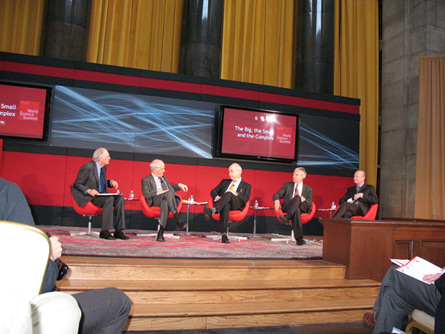The Color of Science and Its Recorders
A very impressive group of science luminaries – including 10
Nobel laureates — turned up to kick around ideas and observations at today’s
inaugural World Science Summit. And then there was this morning’s master of
ceremonies: Alan Alda, an actor who clearly loves science and scientists. The
real disappointment for me was who didn’t show up, or perhaps wasn’t even
invited.
Women peppered the audience. And there was a dash of
color…but only a dash. You could count on part of one hand the number of
nonwhites in attendance this morning. Clearly, science diversity was not an
issue on the summit’s agenda.
Some of the attendees were journalists, and anyone who is
fairly familiar with the science-writing community knows that we are a fairly
homogenous bunch – color-wise, at least. Science News has proved a major
training ground for a great many up-and-coming science reporters. And in 30
years – which corresponds to perhaps 90 interns – I think we have hosted two
blacks, one Hispanic, and three Asian-Americans. (All six have been women, by
the way.) Not a very impressive track record of boosting diversity.
Yes, we try to get the best of the crop of writers exiting
graduate schools. But I’d like to think there are more writers of color out
there. And if not, perhaps the graduate schools – and intern coordinators at
newspapers, magazines, and broadcast outlets – should brainstorm on how to
recruit more entrants from traditionally underrepresented communities.
It’s not, of course, that skin color necessarily makes a
difference. But a sea of skin tones reminiscent of a Crayola box would suggest the
influence of many cultures – and many different ways of looking at the world,
including science. I, for one, think we might find answers to some of life’s
more intransigent problems if we took a more diverse range of approaches, ones
colored by, perhaps, our different ethnicities, economic backgrounds, and
family structures.
I realize that this event was designed to fete and probe the
wisdom of the science community’s movers and shakers. And in reaching positions
of accomplishment and esteem, people tend to accumulate a little gray hair. So
the age of many attendees is fairly understandable.
So too, unfortunately, is their dearth of skin pigmentation.
Science has not always welcomed minorities. I’m not sure how much it turned
them away. But until fairly recently it hasn’t put much effort into recruiting
a diverse cadre of practitioners. So the rows of pale skin at this event
reflects who was attending science and engineering graduate schools from the
1950s through at least the early ‘80s.
The big question is whether the 20th annual
science summit will arrive in vivid color.








